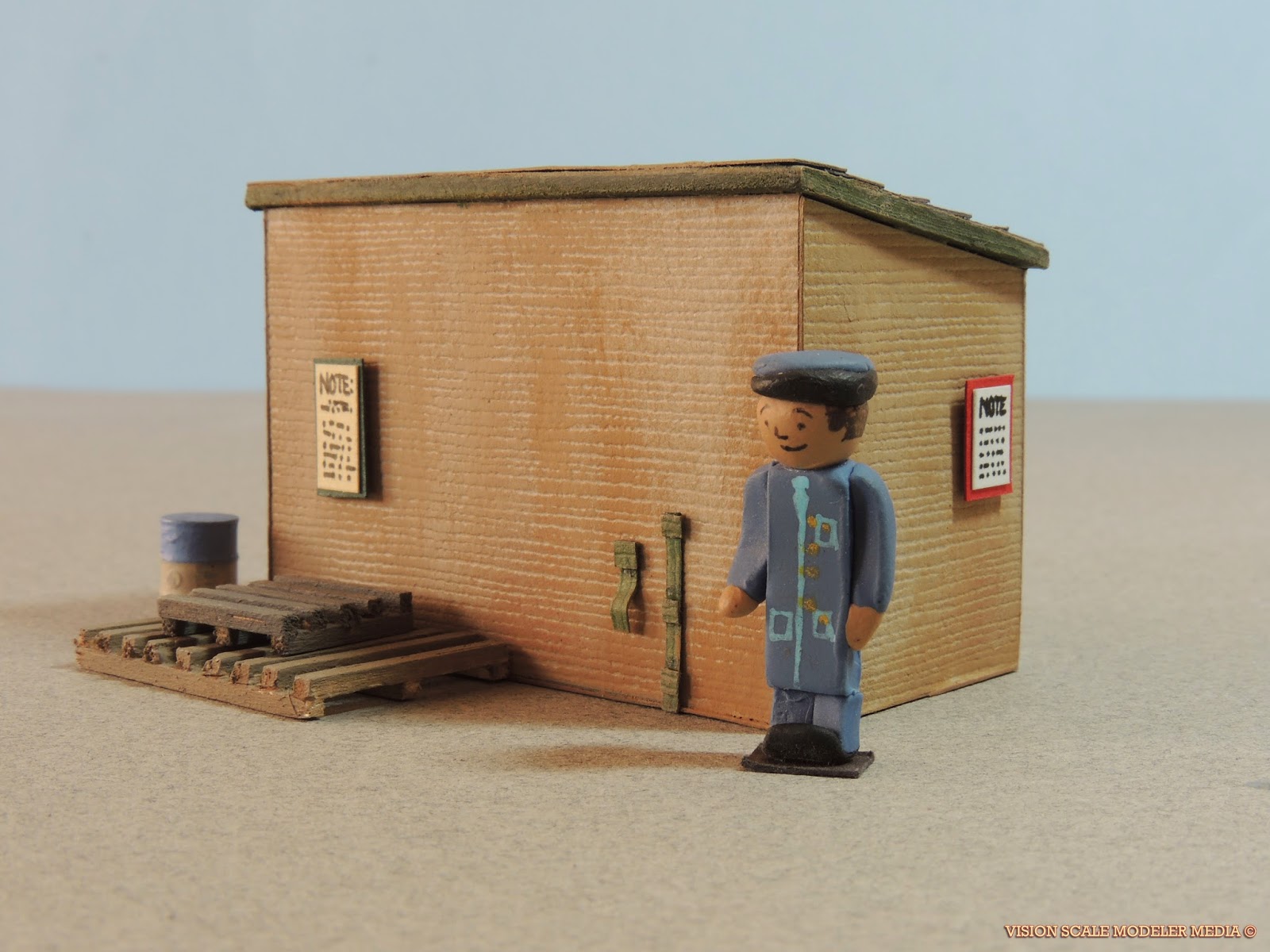Here is today's newest scratch-built model, Tidmoth Yard's very own signal box. I'm calling my first version of these classic structures seen from the early episodes of the Thomas show, Box # 1.
David Mitton's model building team used this structure in many of their dioramas of various locations from seasons 1 and 2, in places such as
Tidmouth Sheds, the entrance to
Knapford Station terminus, and in
Tidmouth Station's shunting yards. It was used with the wall having a stucco surface texture for
Kirk Ronan's station in season 5, before it was remodeled for
the newer seasons after the
Thomas and the Magic Railroad movie. It was even featured painted in Tidmouth Shed's colors in
season 6.
This project was on my mind for a while to draw into a blueprint, so one day I measured out the structure in centimeters, first as it looked in newer seasons.
I thought it would be a good idea to try and see if I can make this box
as it appeared in the first seasons, with tan brick, Hunter Green trim, its cream woodwork, along with its maintenance porch in the front of the windows, and having another go at making a shingled roof!
At the back there is a single window, and I thought it would look nicer if it had a door at the corner, with a simple little notice posted next to it. This would allow the signalman to access the levers and mechanics, operated by the controls inside the upper room, to throw the switches and change the signals.
Here I did give it the stair case it had in newer seasons, the steps wrapping itself facing one way to the other, away from the track. All of the steps and handrails were made from scratch, and glued together, using painted balsa and card-stock.
The drainpipes were also scratch-built using craft wire, primed and painted, and attached to the walls with strips of thin paper wrapped around them, which would represent the fasteners. I think I really am getting better using this technique, as I like it much better than just using paper! They were also bent using pliers.
The maintenance porch in front of the windows would allow the signalman to climb onto it, and walk alongside the windows to clean the glass. You can even see the handle on the side windowsill!
For the roof I used the same technique I used on
Knapford Station's Goods Shed to add shingles, painted using
Plaid FolkArt and
Apple Barrel acrylics to weather the textured surface, as I did with the whole structure.
Before I glued the roof into place, I took this picture to reveal the inside of the cabin, with cabinets, a clock above the table, and a LED spotlight wired into place to light the interior.
I built this little diorama to show you how the completed signal box looks at night fully lit inside! Even though the spotlight made it look a little brighter, I am happy with the result. This would be great to film for "the Flying Kipper," "Edward's Exploit" or "Wrong Road" when Henry and Edward travel past it on their late night train journeys.
Finally here it is basking in the sun as it rises in the morning dusk, the cars ready and waiting for their engines.
Hornby Skaledale made a cast resin version of this signal box a few years back. Here is is with good pictures from
eHattons. It is still available in online hobby stores, and what you could do is to paint and weather it, simply adding on the maintenance porch, but I did want to try scratch-building it myself for obvious reasons. This structure came out beautifully, and I think it is one of my new favorites!
One thing I hope to do in the future is to try and use plastic textured card from
Evergreen Scale Models, and kit-bashing Peco's
Wills or
Ratio kits for making the surface of the buildings. They also have textured plastic sheets. I'd recommend modeling structures using these kits as they are easy to paint and glue together, and they make great models for different scenes on the layout. There are more kits from these two brands, so Google them, and definitely give them a try! It gives beginners an easy start in quality scale modeling.
Happy Model Railroading!





























































